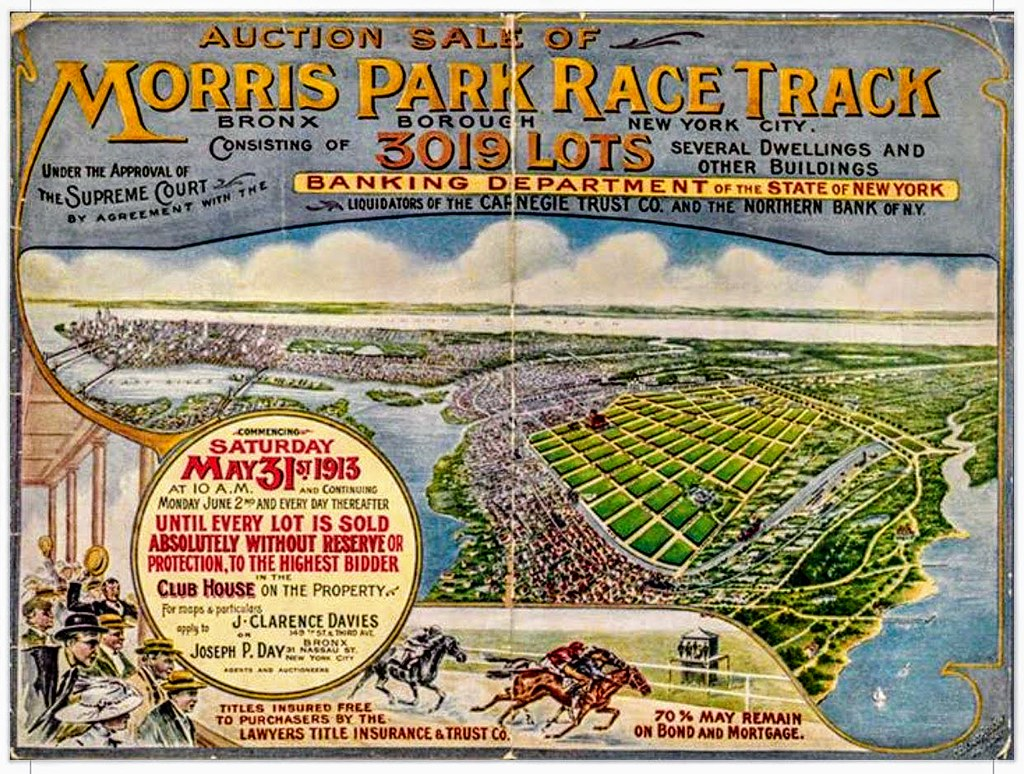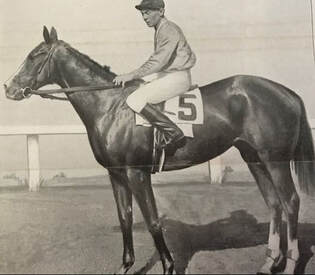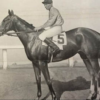
Rinaldo Del Gallo, III
By: Rinaldo Del Gallo, III
I asked a group of readers, “Without researching, can you name a horse that won the Preakness stakes at age five?” Most could not name the horse, many laughed, a few called me crazy, and few more implied I was ignorant. One or two got it right, but they cheated and researched.
The correct answer is MONTAGUE (USA) ch. H, 1885 {12-b}. Born in 1885, he won the Preakness in 1890 at age 5. Well, this is the story of how a five-year-old won the Preakness.
I don’t know of any other races won by Montague, but his Preakness win was, well, a weird one. You see, the Preakness ran at Pimlico in Maryland from 1873 until 1889, just as one would expect. Throughout the history of the Preakness, distances have varied, but that is not terribly uncommon. What is weird is the sudden change in location.
The year prior to Montague’s Preakness win at Morris Park in New York, in 1889, Buddhist from the Glencoe sire line won the Preakness at 10 furlongs at Pimlico in Maryland, as the race is normally associated. The last Preakness before the race went to New York was a race that only had two starters. All years prior, from 1873 until 1888, the Preakness was run at 12 furlongs at Pimlico, the current distance of the Belmont Stakes. Most of the races were won by Byerley Turk sire line horses, with some Leamington sire line mixed in and a few others. Including Montague’s odd run at Morris Park, the Preakness was run at 12 furlongs 17 times.
But this is where the story gets weird. Many people don’t know this about the Preakness—it had a long hiatus in New York. According to the Baltimore Times, “In 1890, due to Maryland Jockey Club’s financial difficulties, Pimlico Racecourse did not renew the club’s lease and the running was moved to Morris Park Racecourse in Westchester County, New York, where the Maryland Jockey Club was able to arrange accommodations.” According to Wikipedia, “Morris Park Racecourse was an American thoroughbred horse racing facility from 1889 to 1904.”
It is not unusual for a famous horse race to go from one race track to a nearby one because of a track closing, whether it be permanently closed or temporarily for repairs. For instance, the Belmont stakes (named after the person not the track), was first run at Jerome Park for 23 years, than Morris Park for 15 years, and then Belmont Park for 112 years, inclusive of the 2023 running. But sending a famous race many states away from Maryland to New York, that is unheard of, or at the least, highly unusual.
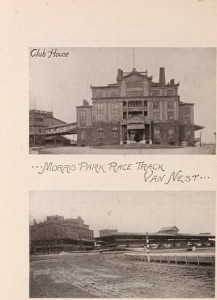
Morris Park, where the 1890 Preakness was held, in Westchester County that was later annexed into the Bronx, New York.
You might be thinking, the Arlington Million (the first race with a million dollar purse) was run at Arlington Park 37 times. It was run at Churchill Downs in 2022 when SANTIN (USA) b. C, 2018 {17-b} won it. According to Google directions, Arlington Park is roughly a 5 hour drive from Churchill Downs. Now the Arlington Million is scheduled to run in Virginia at Colonial Downs for 2023, far from its original location. The move upset Illinois horsemen, and there are still race tracks in Illinois, namely Hawthorne Race Course and Fairmount Park. The Arlington Million was once run at Woodbine in 1988 to accommodate the completion of repairs for a fire. But the Arlington Million moving such far distances is the very rare exception, not the rule. Usually it is a within state move, like moving the Hollywood Derby to Del Mar after the closing of Hollywood Park.
But back to the Preakness, this is where it really gets weird. According to Wikipedia, “On June 10, 1890, Morris Park Racecourse hosted both the Preakness and Belmont Stakes!” Get that—the Preakness and Belmont were run at the same day on the same track!
According to pasthewire.com, “The odd racetrack hosted the ‘Preakness Handicap’ in 1890, the only race in the history of the Triple Crown races that allowed older horses to run. No 3-year-olds actually entered the race. One horse was 8 years old. A 5-year-old horse named Montague won it that year with a light 103 pounds on his back.” The horse that came in second in the 1890 Preakness, PHILOSOPHY (USA) b. H, 1886 was four years of age. He was second and last in the 1889 Jerome Stakes. The third place horse, BARRISTER (USA) ch. H, 1885 {21}, was also five years of age.
You might be asking yourself why “odd” was used to describe Morris Park. According to pastthewire.com, “Morris Park must have been quite a sight in its day. The clubhouse turn was on a hill, so horses had to run uphill on the backstretch and downhill on the homestretch. The homestretch itself widened from a tight 80 feet at the top of the stretch to 240 feet at the finish line.”
The winner of the 1890 Belmont, on the same card as the 1890 Preakness, was BURLINGTON (USA) blk. H, 1887 {9-b}, which pedigree query dot come states “Considered by many authorities as among the best US three-year-old males of 1890.” The Belmont was run at 10 furlongs. Burlington was sired by POWHATTAN (USA) br. H, 1879 {4-r}, a curious horse whose dam was the Travers winning filly MAIDEN (USA) b. M, 1862 {4-r}, tail female ancestress of NEARCO (ITY) br. H, 1935 {4-r}. The Belmont was, and always has been restricted to three-year-old horses.
From 1867-1889, the Belmont Stake was run at Jerome Park. According to Wikipedia, Jerome Park “closed on October 4, 1894 to make way for the Jerome Park Reservoir that was needed for the metropolitan New York City water supply system. The Belmont Stakes, Champagne Stakes, Juvenile Stakes and Ladies Handicap are all famous races that started at Jerome Park. The Jerome Handicap was switched from Jerome Park to Morris Park in 1890, as did the Champagne, Manhattan Handicap, and Ladies Handicap. The Juvenile Stakes was switched from Jerome Park to Morris Park the year prior, in 1889. The Juvenile Stakes would be last run in 1984, its first running in 1874. The Belmont was run at Morris Park for 15 years, running at Belmont for the first time in 1905.
So that June 10, 1890 race card at Morris Park was kind of crazy by today’s expectations. The Preakness Stakes, for the first time and only time in its history was to be open to horses three and up, and no three-year-olds entered. The Preakness in 1890 was run at 12 furlongs, the distance of the current Belmont Stakes. The Belmont, which was restricted to three-year-olds, was run at 10 furlongs (as previously stated), the current distance of the Kentucky Derby.
The Preakness then was not run in 1891, 1892 and 1893. Then for 15 years in a row, the Preakness was run at Gravesend Racetrack in New York. Gravesend opened in 1886 and closed in 1910. Many famous races were run at the Gravesend Racetrack, which I will leave for a discussion another day. But well before the closing of Gravesend Racetrack, the Preakness was sent back to Pimlico in 1909, where the race was started.
The Gravesend Racetrack, home of the Preakness for 15 years, 1894-1908.
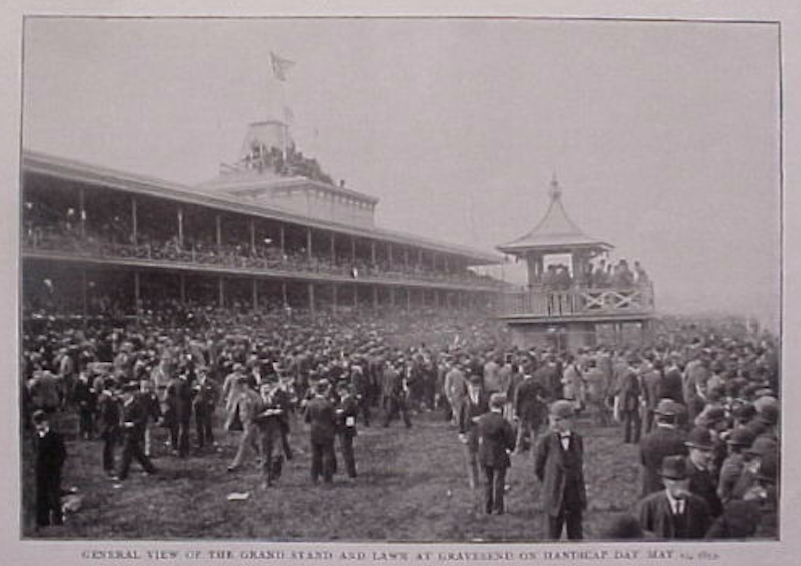
In all, including 2023, the Preakness was run 130 times at Pimlico in Maryland, once at Morris Park in 1890, and as mentioned, 15 times at Gravesend in New York. Given the one year at Morris Park in 1890, the three year gap of 1891-1893, and the 15 years at Gravesend Racetrack, the Preakness took a 19 year hiatus from being held at Pimlico in Maryland.
How and why it went back to Pimlico after a score and year I know not. But from 1909 to the present, without interruption even for war, the Preakness has been run at Pimlico in Maryland, a 113-year streak. The other 17 years of the Preakness being run at Pimlico were its first 17 years. To put things in historical perspective, the gap of 19 years when the race was being held in New York (or not being held at all) exceeded the length of time the race was run at Pimlico prior to its move—17 years.
Upon its return to Pimlico, a horse named EFFENDI (USA) br. H, 1906 {A34} won the race, which was run at 1 mile. It was run at 1 mile in 1907 as well. There were 14 runnings at 9 furlongs, and then in 1925 the St. Sire line horse COVENTRY (USA) blk. H, 1922 {2-a} won the race at 9.5 furlongs or 1 3/16 of a mile, a distance that has since never changed. It was also to be Coventry’s only win in his career. According to pedigreequery.com, Coventry went off at odds of 22-1.
In 1890, that Preakness was run under handicap conditions. It was run as a handicap also from 1910–1915.
But remember June 10, 1890 at Morris Park. It was the day the Preakness was run on the same day as the Belmont, on the same race track. And the Preakness was open to horses three years old and up, none age three entered, and the five-year-old Montague won. Oh, and June 10, 1890 was a Tuesday, not Saturday. I believe that the 1890 Preakness was the only time that an American Classic (Kentucky Derby, Preakness, and Belmont) allowed horses other than 3-year-olds to compete.
There was a scandal in 1844 when a four-year-old “won” the Epsom Derby, a horse that was named Running Rein. RUNNING REIN b. C, 1840 {5} was entered in the 1844 Epsom Derby and “won” it, but he was illegally entered as the race was, and always has been, limited to three-year-old horses. But Montague was a legitimate five-year-old winner of the Preakness. For what it is worth, the horse that was second to Running Reign but was declared the winner was ORLANDO (GB) b. H, 1841 {13-a}, a horse that was destined to win 10 of his 12 starts and be the English leading sire three times.
So yes, in 1890 a five-year-old horse named MONTAGUE won the Preakness. And that’s the crazy story behind it.


